Since the dawn of time, mankind has tried to perfect ballistics with a projectile.
From a thrown stone, the bow and arrow, to finally the modern rifle cartridge, we keep progressing.
That is why there are so many rifle cartridges.
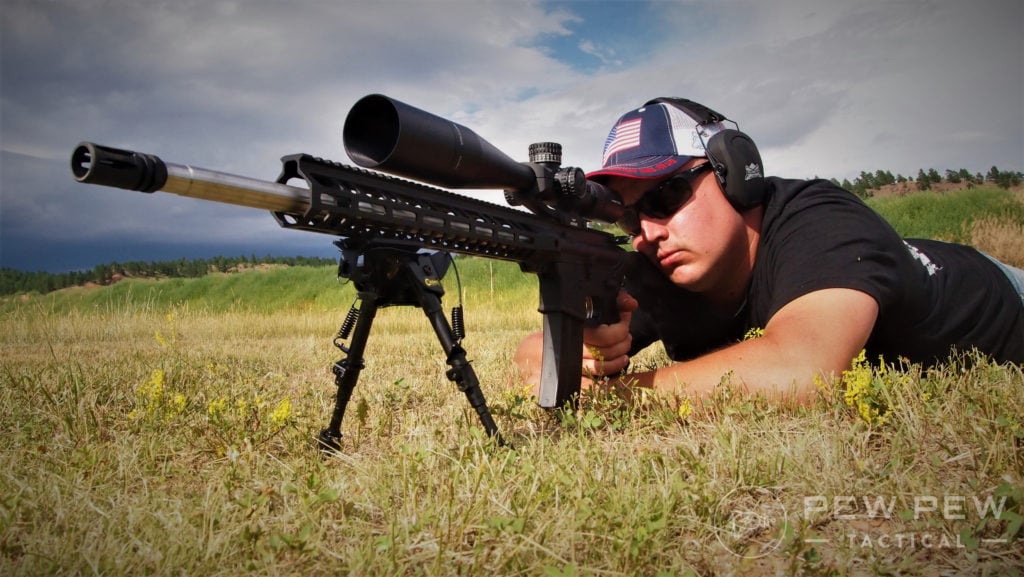
We are perfectionists. We need more speed. We need more range. We will not be satisfied. That in my opinion is at the heart of the .224 Valkyrie and its design.
Is the .224 Valkyrie right for you? What kind of ammo selection is there and prices? Does it live up to the hype of a legit 1300-yard cartridge. Let’s dig in.
Research and Development
The .224 Valkyrie was designed by Federal Ammunition in 2017. Its parent case is the 6.8 SPC which was based off the .30 Remington cartridge.
Just like most great cartridges, its lineage is further proof that we can’t leave well-enough alone.
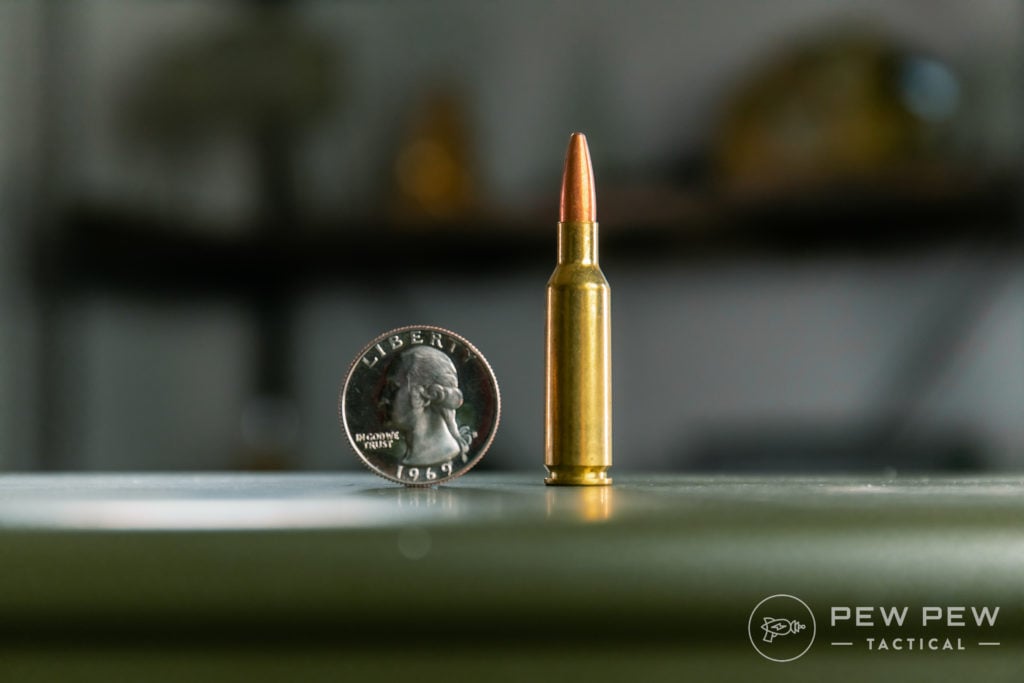
The .224 Valkyrie wasn’t asked to fill a void, yet it did with its creation.
Before its inception, longer range shooting was dominated by larger caliber bolt rifles or large framed ARs in .308 Winchester and 6.5 Creedmoor.
While the 6.5 CM is still better on paper, the .224 Valkyrie can fit within an AR-15 magazine well.
The science behind it is justified as well, even though I was a HUGE skeptic. It’s not wizardry, black magic, or voodoo behind the curtains at Federal.

The name of the game is all about velocity and HIGH ballistic coefficient.
When you look at the longest, and heaviest projectiles that you can typically load in a .223 Rem/5.56 NATO, you are capped at about 85 grains if you want to fit within a magazine well.

With Federal Premium 90 grain SMKs in their Gold Medal line, muzzle velocities are listed at 2700 fps and a phenomenal .563 G1 ballistic coefficient.
That much velocity and that high of a ballistic coefficient, pushing out past 1000 yards is much more predictable with less wind-drift than even the 6.5 Grendel.
You’ll also notice that barrels will be either a 1:7 or 1:6.5” twist rate. I have shot over 1k yards with a 1:7” twist rate using 90 grain SMKs, so I wouldn’t worry too much about which to buy.
You will probably benefit with a 1:6.5” twist if you are planning on exclusively shooting long for caliber projectiles on the regular, though.
Compare and Contrast
Speaking of the 6.5 Grendel, I am a huge fan boy. There is a lot going for it and feel free to check out my article 5 Best 6.5 Grendel Uppers.
But, as much as it may pain me to say this, the .224 Valkyrie is better by most metrics compared to the 6.5 Grendel.
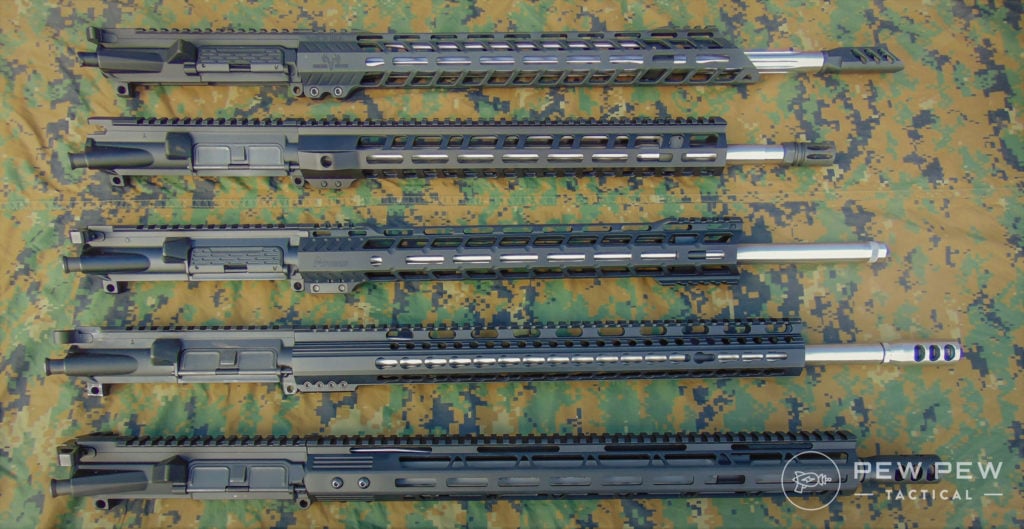
When you compare the Valkyrie to the Grendel, the comparison is surprisingly in favor of the .224 Valkyrie with only the Grendel edging out the Valkyrie in kinetic energy… but not by much.
Here is a break down of velocity, kinetic energy, wind drift, and bullet drop at 500 yards.
This data is based off a 100 yard zero, with a sight height of 1.5”, and based on a 10-mph full value wind call. The data was compiled using Federal’s Ballistics Calculator.
500 Yards: .224 Valkyrie Vs. 6.5 Grendel
| Cartridge | Bullet | G1 B.C. | Velocity | Energy | Wind Drift | Bullet Drop |
|---|---|---|---|---|---|---|
| .224 Valkyrie | 90gr SMK | .563 | 1961 fps | 768 ft⋅lb | 16.9″ | 55.5″ |
| 6.5 Grendel | 130gr Berger | .560 | 1711 fps | 845 ft⋅lb | 20.6″ | 73.4″ |
There is a pretty noticeable performance gap out to 500 yards. But when you jump it up to 1000 yards, the gap is even more pronounced.
1000 Yards .224 Valkyrie Vs. 6.5 Grendel
| Cartridge | Bullet | G1 B.C. | Velocity | Energy | Wind Drift | Bullet Drop |
|---|---|---|---|---|---|---|
| .224 Valkyrie | 90gr SMK | .563 | 1374 fps | 377 ft⋅lb | 80.7″ | 347.4″ |
| 6.5 Grendel | 130gr Berger | .560 | 1203 fps | 418 ft⋅lb | 96.2″ | 457.9″ |
So, what does this mean to you? It depends. If you are a hunter that is keeping shots on game within 300 yards, and you want to use the AR-15 platform? The 6.5 Grendel would be the better choice in my opinion due to the larger bullet and better terminal ballistics.
If you are a long-range shooter punching paper or ringing steel though, the .224 Valkyrie is by far the better choice. Although recoil is low for both, the Valkyrie has an impressive 110” of less bullet drop at 1000 yards.
To put this into perspective, here are the numbers when you compare the Federal Premium .224 Valkyrie 90 grain SMKs to a comparable load in 6.5 Creedmoor at 1000 yards. Same deal with a 100 yard zero and 10 mph full value wind.
1000 Yards: .224 Valkyrie Vs. 6.5 Creedmoor
| Cartridge | Bullet | G1 B.C. | Velocity | Energy | Wind Drift | Bullet Drop |
|---|---|---|---|---|---|---|
| .224 Valkyrie | 90gr SMK | .563 | 1374 fps | 377 ft⋅lb | 80.7″ | 347.4″ |
| 6.5 Creedmoor | 130gr Berger | .560 | 1476 FPS | 629 ft⋅lb | 74.0″ | 300.7″ |
While the Creedmoor is better, the .224 Valkyrie is damn close and uses less powder with less recoil than the 6.5 Creedmoor. Low recoil is a blessing for shots at 1000+ yards. While on a trip to the High Bar Homestead, I was able to watch hits at 1000 yards on a steel silhouette due to lack of recoil.
Best .224 Valkyrie Ammo
When the Valkyrie first came out in 2017, ammo selection was a short list which is common for a new round. Federal has the lion’s share of offerings, but as the Valkyrie’s concept proved itself, more companies have jumped into the deep end with factory ammo and components.
Federal Premium
1. Federal 80.5 grain Gold Medal Berger
A newer member in the lineup is the Federal Premium 80.5 grain Gold Medal Berger. It’s a bit lighter than the SMK’s, but it’s a good blend of ballistic coefficient and velocity for long range marksmanship. This is also a solid long-range load.
Prices accurate at time of writing
Prices accurate at time of writing
-
25% off all OAKLEY products - OAKLEY25
Copied! Visit Merchant
2. Federal 78 Grain Barnes TSX
If you are anything like me, you also believe that Barnes ammunition and components are absolute gold. Luckily Federal tag-teamed with them to offer their 78 grain TSX at 2850 FPS! The TSX would be at home for shooters using the Valkyrie on medium game.
Prices accurate at time of writing
Prices accurate at time of writing
-
25% off all OAKLEY products - OAKLEY25
Copied! Visit Merchant
3. Federal Fusion 90 grain soft points
Speaking of deer cartridges, you would also be well-off to investigate the Federal Fusion 90 grain soft points. This bonded bullet expands consistently and rather large. It would be good medicine if you are looking for a dedicated deer load in the Valkyrie.
Prices accurate at time of writing
Prices accurate at time of writing
-
25% off all OAKLEY products - OAKLEY25
Copied! Visit Merchant
4. Federal 60 grain Nosler Ballistic Tip
Another option for the varmint/predator hunters among us is the Federal Premium 60 grain Nosler Ballistic Tip. It uses nickel-plated cases, and the Nosler BT’s have always served me well when it comes to dispatching varmints with rapid expansion.
Prices accurate at time of writing
Prices accurate at time of writing
-
25% off all OAKLEY products - OAKLEY25
Copied! Visit Merchant
5. American Eagle 75 grain TMJ
Finally, to round out the pack an economical option is available in the American Eagle 75 grain TMJ. Whether you are on the range plinking or smacking woodchucks/prairie dogs, this load will do well when you need to stock up in bulk.
Prices accurate at time of writing
Prices accurate at time of writing
-
25% off all OAKLEY products - OAKLEY25
Copied! Visit Merchant
Hornady
6. Hornady 88 grain ELD Match
If you are interested in long-range flavors, Hornady has an offering in their 88 grain ELD. The ELD line has always served me well across multiple calibers such as .223 Remington, 6.5 Grendel, 6.5 CM, and .308 Winchester.
Prices accurate at time of writing
Prices accurate at time of writing
-
25% off all OAKLEY products - OAKLEY25
Copied! Visit Merchant
7. Hornady 60 grain V-MAX
If you are a varmint hunter, they also offer their 60 grain V-Max at a whopping 3300 fps! The V-Max bullet has always been synonymous with precision and devastating terminal ballistics. I haven’t had a barrel that didn’t shoot them well across multiple weights.
Prices accurate at time of writing
Prices accurate at time of writing
-
25% off all OAKLEY products - OAKLEY25
Copied! Visit Merchant
8. Hornady Black 75 grain BTHP
For a more modest bank account, there is also the Hornady Black 75 grain BTHP. For the price, I have always been very happy with the Black lineup, and almost exclusively shoot it out of my Grendels with their 123 grain ELDs.
Prices accurate at time of writing
Prices accurate at time of writing
-
25% off all OAKLEY products - OAKLEY25
Copied! Visit Merchant
Best .224 Valkyrie Rifles, Uppers, & Barrels
So, we covered ammo but what can you buy to launch that ammo down range? Luckily there are a whole bunch of rifles on the market, dedicated uppers, and barrels if you plan on building an AR.
Complete Rifles
Savage was one of the first manufacturers releasing their MSR 15 Valkyrie. With an 18” barrel, you may not get the full velocity advantages out of the Valkyrie, but it will be much handier.
Prices accurate at time of writing
Prices accurate at time of writing
-
25% off all OAKLEY products - OAKLEY25
Copied! Visit Merchant
The two-stage trigger on this model is also a nice touch.
Palmetto State Armory has a more wallet-friendly model with their PA-15 Valkyrie.
Prices accurate at time of writing
Prices accurate at time of writing
-
25% off all OAKLEY products - OAKLEY25
Copied! Visit Merchant
I personally took this model out to 1250 yards with Pew Pew Tactical’s own Eric Hung. For the price, it’s hard to beat.
We also have a complete video on it, so check out Johnny’s PSA .224 Valkyrie!
If bolt actions are more your flavor, Mossberg has their chassis MVP Precision Valkyrie for at about a grand. Chassis rifles are hot now, and this would be an economical way to get into the long-range scene.
Prices accurate at time of writing
Prices accurate at time of writing
-
25% off all OAKLEY products - OAKLEY25
Copied! Visit Merchant
.224 Valkyrie AR-15 Uppers
Just like the rifle from Palmetto State Armory, the upper is hard to beat in its price range. If you haven’t already, check out our review of the PA-15 .224 Valkyrie!
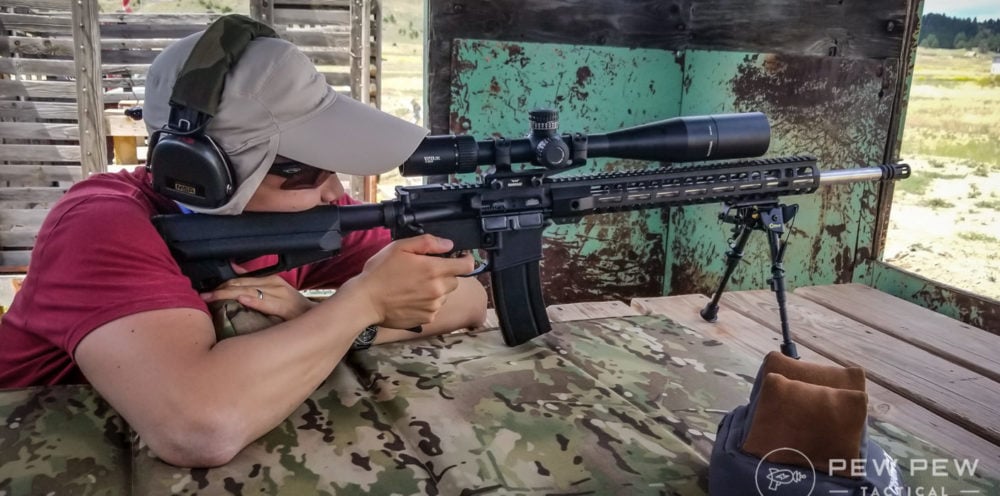
Prices accurate at time of writing
Prices accurate at time of writing
-
25% off all OAKLEY products - OAKLEY25
Copied! Visit Merchant
If you are looking for a rock-solid upper that you can finish with the handguard of your choice, your best option might be a Sons of Liberty Gunworks East India upper in .224 Valkyrie. Mike Mihalski and company have quite a reputation, and you won’t be disappointed.
Prices accurate at time of writing
Prices accurate at time of writing
-
25% off all OAKLEY products - OAKLEY25
Copied! Visit Merchant
.224 Valkyrie Barrels
If you are doing your own build, the Valkyrie 20” Gunner Profile from Faxon would be a solid choice. Faxon barrels tend to be highly accurate, and their “Gunner” profile is the bee’s knees if you are looking to shed a little weight.
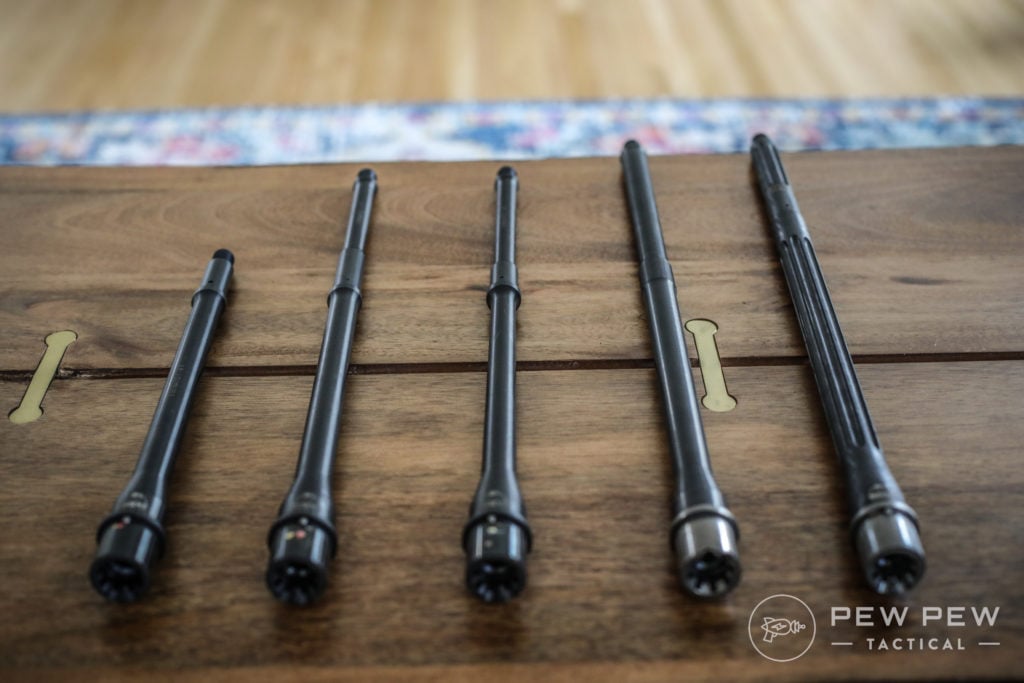
Prices accurate at time of writing
Prices accurate at time of writing
-
25% off all OAKLEY products - OAKLEY25
Copied! Visit Merchant
Criterion Barrels are one of our favorites as well. I have had nothing but great experiences with their barrels and tend to print sub-MOA groups with match grade ammunition.
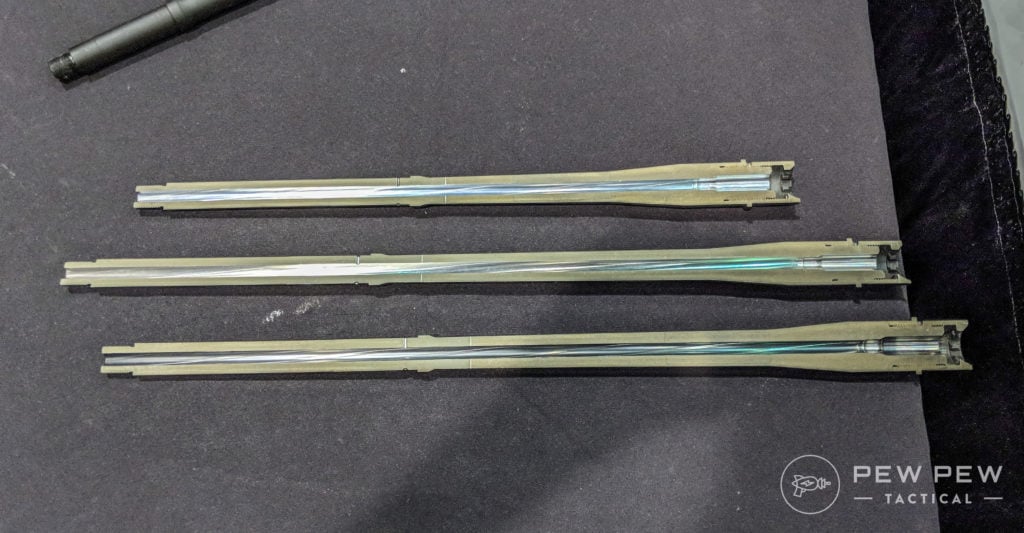
We’ve been working with their barrels in 6.5 Grendel and 6.5 Creedmoor also and they are amazing. If you want to grab yourself a barrel made by precision gurus — Criterion.
Prices accurate at time of writing
Prices accurate at time of writing
-
25% off all OAKLEY products - OAKLEY25
Copied! Visit Merchant
If you want to go all out, the BSF Carbon Fiber barrel will be able to outshoot you. If you want a rigid barrel but don’t want the weight, this would be a great option… if your bank account can handle it.
Prices accurate at time of writing
Prices accurate at time of writing
-
25% off all OAKLEY products - OAKLEY25
Copied! Visit Merchant
Parting Shots
So, is the .224 Valkyrie right for you?
If you want to take advantage of the AR-15 or want a light recoiling bolt action rifle that can reach out to 1300 yards, then my guess would be a HARD YES.
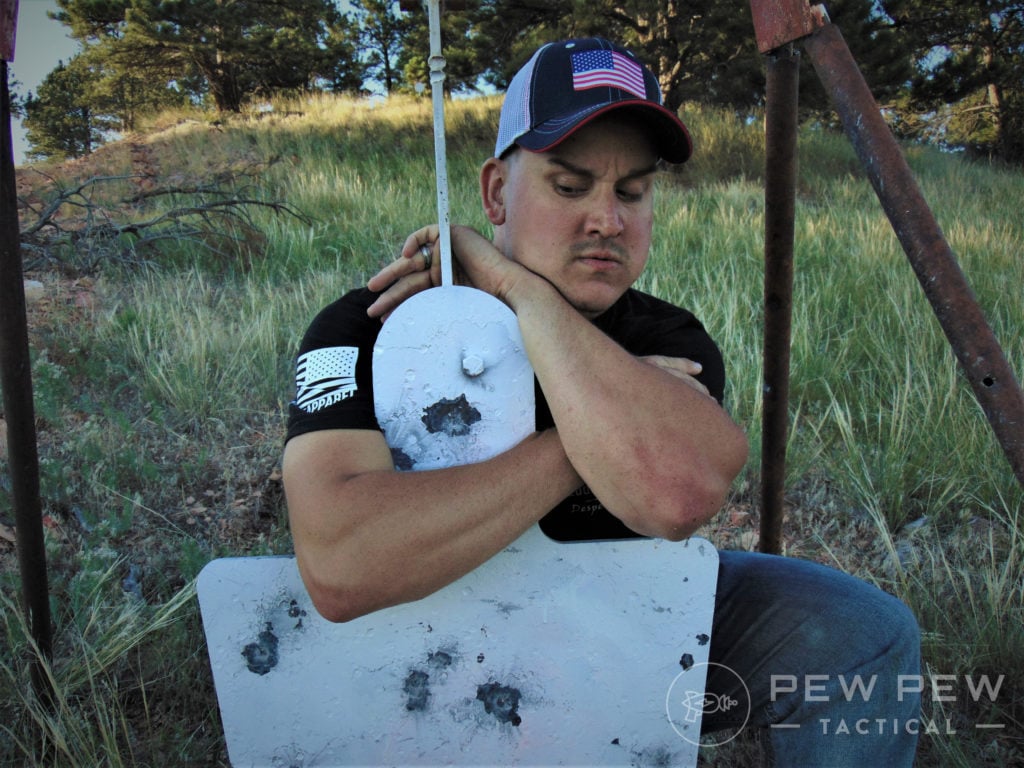
With plenty of different types of ammo out there and more companies producing excellent rifles and parts, now is the time to jump in.
Are you aboard the .224 Valk hype train? Did you go with 6.5 Grendel instead? Let us know in the comments! For some long range glass to match your long range caliber, check out the Best Long Range Rifle Scopes

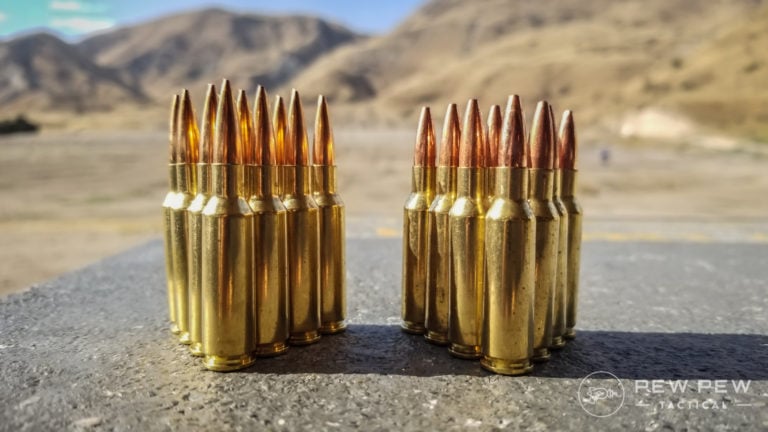














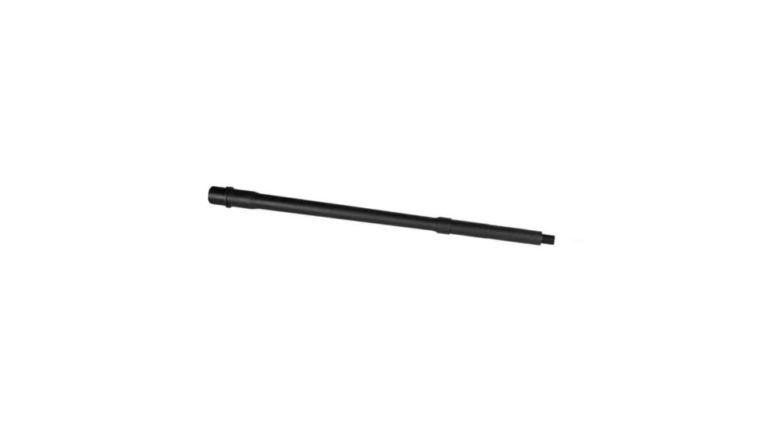

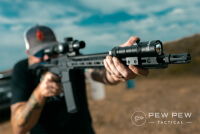


76 Leave a Reply
I still shake my head every time caliber comes into a discussion on ballistics, especially in self-defense and hunting. It seems that the kinetic energy formula, KE=(0.5)(mass)(velocity (squared)), is always forgotten. The effect of mass is linear. The effect of velocity is exponential and the most important part of the equation. Thank you for reminding everyone that the amount of energy delivered to the target (assuming proper shot placement) is the most important consideration.
I sold my 1 MOA 6.5 Creedmoor Fix by Q and built a LaRue Ultimate Upper in .224 Valkyrie. It’s a half MOA at 100 yards all three rounds in one ragged hole every time! I love this rifle.
How about a comparison to similar rounds like the 243, 270, or 7.62×39.. Or a Comparison to the 22 nosler? 5.56 is just too Narrow in comparison.
I have a 1:7 TWIST 18" Barrel AR in 224 ive been building, got a Great Price on a Barreled Upper. Seems i could by information hit a moving target with less lead, hit the occasional varmints like coyote or hog at range, or tag a White tail at closer distance. So i took a Chance, as i haven't had an M16/AR15 platform in 15+ years since i got out of the U.S. Army.
I finally did a .224-V build and was excited to try it out. My first magazine selection jammed repeatedly, as did my second and third. Then I tried normal .223 mags and it was "better", but still jammed every other mag or so. After trying several other adjustments without success (buffer, gas block, ammo, etc.), my fifth magazine try was an E-Lander 6.8-SPC/V-224 magazine that has now fed flawlessly every time for hundreds of rounds. Interestingly, I experienced the same issue on a 6.5 Grendel build, where jams drove me nuts with multiple mag brands until the E-Lander 6.5-G mag worked flawlessly. Bottom line(s) ... (a) magazine brand matters, and (b) E-Lander just "works" (at least for me).
Me to the E mags work perfectly with 20+ rounds in my Grendel.
Ok I'm waiting to know if I go with a 1/10 or 1/12 twist with the Valkyrie would this basically be a 22-250 on a AR 15 platform with out having to go to a AR 10 I'm thinking 40-45 gr bullets for prairie dogs
It is possible. Sierra has load data for 52gr bullets, but so far that is the lightest bullets I can find load data for. I'm not sure why I can't find data for 40-45gr so there might be an issue that I'm not aware of when loading that light. I would strongly recommend trying to track down reliable load data before embarking on this experiment.
You might want to look into .22 Nosler also. I know Nosler has published data for 40gr bullets pushing around 3,900fps, which would be very similar to .22-250.
Owning a .224 Valkryie for over a year. AR-15 .224 Valkyrie, 24” stainless match Rainer barrel, 1:7.5 twist, fluted, TNNi barrel support, gas system rifle +2” This rifle will shoot < 1 MOA@ 1300 yards. I reload my ammo using Starline brass
88 gr hornady eld-m
R-17 26.7 gr
Chrono data
Avg 2701
High 2723
Lo 2690
SD 12
ES 33
I have used numerous barrels manufactures and starting from 20” barrel length up to 24” in length. Other manufactures barrels would not group bullets over 80 gr. The Rainer barrel is far the best barrel out of the group. I have also used a DPMS lo-pro upper receiver that has been designed for match barrels. This combination has good results.
I own a Valkyrie and I love it. I have not gotten it out to 1000 yards yet but I'm getting there. The trigger pull is great and as he said the kick is good too. Well worth the money. I reload all my own rounds using the .224 rcbs dies.
I was liking everything I read about this round to the point of almost making a purchase when I found an article deeeep into my research- I'm pretty troubled with the early data collected regarding gyroscopic drift at long (1000+) ranges. Can anyone who has spent decent time behind the trigger share anything about their experience on this? I would llve to hear what anyone has to share-even annecdotal. Thanks-
Wilson
Should I use 6.8SPC dies to reload .224 Valkyrie rounds?
Has anyone had any success with 90gr. bullets and 1/7" barrels? My Stag won't cycle anything less than 60gr. and sprays anything more than 80 gr. Sierra advises 1/6.5" barrels for their 90&95gr. bullets. But, no one short of custom makers offer that twist rate. A Stag 'cause they make affordable left hand actions.
I have had my Valkyrie for 3 months. I hand load 90 gr Sierra Match king with Reloader 17 powder. I have a 22 in barrel 1/7 twist and shoot 100 yd groups that are MOA. I am fine tuning my powder charge to see if I can tighten the group. I am very happy with results
My experience with the .224 Valkyrie:
Interest: Long range target shooting.
Background: I'm new to the shooting sports, having purchased my first firearm at the age of 44. At 48, I've shot less than 4,000 rounds total in my lifetime. The spent cases that I collect from my shooting sessions don't even fill a 5 gallon bucket half full. I get the opportunity to shoot maybe twice per year. My eyesight isn't what it used to be. Summary? I'm an amateur with limited shooting experience and less than expert skill.
Firearm: A CMMG Mk4 .224 Valkyrie, 24" barrel, 1:7 twist. Purchased only after having watched every YouTube video, read every review and blog, and studied at great length the published ballistics data for the .224 Valkyrie from Federal and Sierra. This wasn't an impulse purchase, but does represent my first AR-15 purchase.
Cartridge: Federal Premium Gold Medal Sierra Matchking 224 Valkyrie 90 Grain Hollow Point Boat Tail
Scenario: Zeroing and sighting in the newly purchased CMMG rifle in the middle of Summer in the high desert. All shots from the prone position.
Result: After having completed the zero sight in and shot from short to medium ranges, I decided to take the rifle out to increasingly longer ranges at 100 yard increments. I concluded with my first ever 5 shots at 1,200 yards. Let me repeat that: this was the first 5 shots I've ever taken with any rifle ever at 1,200 yards. The group was 8 inches; less than MOA if we assume 1 inch per 100 yards. Furthermore, this was shot in high desert, high wind, in the middle of Summer. The mirage currents looked like a fast moving stream of water in the air; the target was barely visible as it danced and hovered - fractured and ghostly - above the horizon.
In the interest of full disclosure, the group was 3 feet low and 2 feet to the right of point of aim. I have no doubt that with further range sessions I will be able to compensate and bring the group closer to point of aim with time, patience, and practice. But keep in mind, this was my first 5 shots EVER at 1,200 yards. Not the best of 20, not a 5 shot group after 20 shots of trying to tighten up the group, but rather the very first 5 shots fired cold at that distance.
Unfortunately, the range session was cut short by the appearance of the local sheriff, called in by a gun-hating Nervous Nelly who had witnessed my target shooting session (end result: no citation and told to carry on as I was on BLM land and had broken no laws; but it was late on my last day in the desert and I had to pack it in as I was down to my last 1/2 gallon of water). So no opportunity to bring the group closer to point of aim this time around. Next time, next time...
Summary: A relatively new-to-the-shooting-sports, amateur, middle-aged shooter firing a newly purchased AR-15 for the first time (and which represents his first time owning and firing an AR-15) achieved an 8 inch, first-fire, 5 shot group at 1,200 yards in wind and extreme mirage using the 224 Valkyrie. Precision is there, accuracy needs work (that's on me, not on the rifle nor the cartridge). Still, I'm very happy with the result and I am confident it will only improve with time.
Thats great to hear. What barrel? load? Thanks
How does the 224 Valk compare to the 6.5 Grendel in terms of ballistics?
I too was wondering the very same thing. Also curious about throat erosion common with elevated velocities. Barrel life is an important consideration. I am a hunter so long range shots aren't of much importance. Low recoil with enough ft.lbs. to instantly drop a whitetail. I can put the bullet where it needs to go. The bullet needs to have enough energy to do the job. I know the 6.5 Grendel works very well on a 160 lb. Whitetail.
Just FYI PSA has Valkyrie uppers with 200rds of the federal fusion on sale for $449.
I just ordered one
Good find! I was going to throw that on our daily deals today but I forgot with the huge sale over at Brownells. Thanks for the reminder, I'll add it now for people!
Why everyone wants to compare these AR-platform wonder cartridges to 5.56 (and each other) WITHOUT discussing short barrel performance is beyond me. Listen.. if we are sticking to 18", 20", 22", 24" barrels.. and only talking long range, fine. but if you want to compare to .223 & 5.56 or even .300 etc, you HAVE to discuss short barrel performance. 16" 14.5" 12.5" ...
A lot of AR-15 AR-10 consumers want an ass-kicking round for close quarters, but one that can also reach out and touch something at distance, with effective terminal ballistics. That allows the AR to hunt, defend, and plink.
Stay away from airborne arms. I'm stuck with my piece of shit Airborne Arms "premium" pathfinder barrel . I've requested warranty work because they have a 1 MOA guarantee. The best group I've ever gotten in 650 rounds is not any better then a 4 year old could get with a sling shot. Its a ridiculous piece of junk and the owner Ryan Morgan is a bigger piece of junk. He is claiming that I abused my barrel and that he is voiding the warranty without being able to provide any evidence of this "abuse." Beware, if you have a problem he will be a weasel and blame you for his shitty product. He also has never test fired the barrel.
I just purchased a 20" Aero Precision complete upper and lower for 724. All I need is a mag and ammo and its range time. Look for deals out there, and stay away from PSA. Their track record is pretty shoddy.
I've dealt with PSA for more then the past year in both AR15 and AR 10 platforms and the only problem I have had is an oversized front take down pin which was a little pain but nothing worth losing time to even request a replacement over. For less then $5 I just ordered a new one and it fit fine. I have a .224 Val barrel and BCG coming so I'll report any shortcomings on those once I get out and try it out.
What twist 1:6.5 is the go to for the best results, but 1:7 seems the one that manufactures can build for reliable results. 20 vs 24 inch barrel?
Want a complete upper and looking at the Bear Creek Arsonal in 24". The 90 grain is more for the 1:6.5 twist and hell this is confusing.
1:7
Bought a BCA 1in7, 18" upper and have terrible groups using 88 gr. Hornady ELD bullets. Going to try Hornady 75 gr. A-Max next.
As for gun manufacturers using 1in7 twists, with gun sales down since the Trump election, I imagine they have a lot of 1in 7 barrels laying around that they have to get rid of.
I just ordered a White Oak 24” barrel for my build. We’ve used their barrels in the past on numerous AR projects and have had great results. Going to use a billet Wyoming Arms upper and lower with a Magpul adjustable stock and a Geissele trigger. Looking forward to seeing what this thing will do once it’s all together. Guess I’ll have to start looking for a long range scope to go along with the Valkyrie.
After fact checking for long enough/doing months of my own research then finding an article on here that covered all of said research in ten minutes I have come to trust y'all just about as much as any fanboy could. So here is my question- I have my competition 3 gun AR in 5.56 that is very versatile, by the fiance and I have always discussed getting her into long gun competitions as that is where she excels (vs the kinetic run and gun stuff), and after a few weeks of research I am convinced that the .224 Valkyrie is my next purchase. It'll be used for everything from crazy range plinking to hunting whitetail to competitions. I have narrowed it down to these four- basically because I do not want less than a 20" barrel (22"-24" ideally)- but I also want my fiance to stay my fiance- so here's my question. The first and second options are way budget- and seems like it could hold its own long enough for us to hunt with it and train at that crazy distance shooting- but in my experience you spend way more in the end upgrading a gun then just getting exactly what you want from the start. So go with A.) or B.) budget gun and upgrade over 1-2 years, or C.) what looks to me like a dang perfect rifle that would require little to no upgrades for what I need it for. Of course open to any other suggestions- but your input is much appreciated because saving money now sounds ok but I really like everything that comes on option C.)
A.1) https://palmettostatearmory.com/psa-20-rifle-length-224-valkyrie-1-7-stainless-steel-lightweight-m-lok-moe-ctr-2-stage-rifle-5165448568.html
A.2) https://palmettostatearmory.com/psa-20-rifle-length-224-valkyrie-1-7-stainless-steel-lightweight-m-lok-moe-str-rifle-with-2-stage-trigger-5165447926.html
B.) https://www.cheaperthandirt.com/product/radical-firearms-ar-15-semi-auto-rifle-224-valkyrie-15-rounds-22-stainless-steel-barrel-15-free-float-mhr-handguard-mft-minimalist-collapsible-black-814034020602.do?sortby=ourPicks&refType=&from=fn&ecList=7&ecCategory=676514
C.) https://www.cmmginc.com/product/rifle-mk4-dtr2-224-valkyrie/
PS. Are there situations where a 20" barrel of higher quality will outperform a 22-24" of lower-medium quality? Not sure if I am too focused on barrel length to see other viable options around the same price that are right in front of my eyes.
Thanks in advance-
Hey Alex,
.224 Valk is a little odd in that barrel length has an almost linear effect on muzzle velocity from top to bottom. At 20" you're going to be looking at around 2620fps and at 24" closer to 2720fps. How much that matters to you will depend on what you want to do with the rifle. Depending on your style of long range plinking and precision, the extra muzzle velocity might matter a decent bit - but if you plan on hunting a lot with this rifle then the extra inches can get really annoying and heavy to carry when you're stalking deer or even just sitting in a hide.
As for the rifle itself, personally, I would go with the cheaper of the two PSA rifles and follow it up with $300-500 on some decent glass and ammo. Lots of ammo. Shoot that, get to know the rifle, and look at what might need upgrading. My first thing to change out would be the stock, fixed stocks are a lot more stable and help with long distance shooting - but since you're sharing this rifle with someone else, you might want to keep the adjustable stock and just get a *better* adjustable stock so that you can change the LoP between each user.
For glass - I would highly recommend Vortex's new 4-16x FFP Diamondback Tactical. We havent finished our review of it yet but I can give you a sneak preview in saying that it is awesome and for the price point, best in class.
If you/your better half are going to enjoy long range shooting, cry once; get the Wilson Combat 22" 1:6.5" with matching BCG, we are getting as good as .25 MOA out of ours. We are having a lot of fun shooting this along side our 220 swift, that said we are really enjoying the Valkyrie, plus the name is cool.
Yes, if you are going to shoot long range you will want an upper that groups well. All the gun magazines are talking about is how far the 224 valkyrie will shoot. I have been scouring the internet for reports on how well the valkyrie groups. Some seem to group well but more people are reporting that their uppers are not shooting well. Precision Firearms and CMT guarantee .5 moa at 100 yds. but I have not seen any reviews from any owners yet. I sent my BCA upper back and was refunded my money. They were very courteous and fast. Yes, it was a cheap upper but a lot of uppers at twice the price did not shoot any better. The 224 valkyrie may be a finicky cartridge. I will wait a little longer and may purchase a CMT, Precision Firearms or Wilson or maybe nothing and just chalk the dies and brass off as a small loss.
You fail to mention any regular bolt action rifles chambered for this round unless there are none. Otherwise keep up the good work.
The only bolt-action I've seen for it is from MPA and retails for $2,800. the .224 Valk was designed to be fired from the AR-15 platform so it is unlikely that anyone is rushing to make a bolt-action for it.
That’s a shame, “cos here in Australia we can only have bolt action....sniff :(
I am happy to hear you can have even a bolt action rifle; I was mislead to believe all firearms were prohibited and had previously been purchased from civilians by the government or later confiscated. I would hate to give up my semi auto rifles, but I suspect I could stil find contentment with a handful of bolt action rifles in 6.5; .338 Lapua; 308; .22; and say .243 or .260. Never been to your neck of the world but I am picturing some great open long range locations to make ELR shots.
What people forget to talk about is the barrel twist required for using the 90gr SMK effectively, which is 1:6.5 Most Valkyrie barrels offered out there are 1:7 twist which is not going to get it. Secondly an OTM or HPBT bullet will experience some form of concentricity issue from auto feeding, Why bolt guns are often more accurate. My 6mm and 6.5 Creedmoors are based on the more expensive heavier LR308 frame, but with the JP recoil eliminator the recoil is not an issue and you can keep you head in the scope for spotting and rapid follow-on shots.
No mention of the WSSM rounds? They fit in an AR-15 action, and offer the same crazy ballistics. https://en.wikipedia.org/wiki/.223_Winchester_Super_Short_Magnum
So what bolt do you use. 223, 243, 25 WSSMs all have a .535" casing rim diameter, 458 SOCOM and 450 Bushmaster have .473. You might be able to single stack rounds but not many. WSSM loses utility in an MSR-15 frame, The advantage of the Large Frame short action LR308 is mission utility for long range as well as classic battle rifle and hunting applications
For the .224 you use a 6.8 SPC bolt and mag
I'm impressed. Being terminally ill, I'd like to leave my wife with a decent Southwestern Rural Toolkit, and this seems just the ticket; the recoil of an SR-25 is punishing for her.
Very sorry to hear that Andrew. The .224 is definitely less recoil than the SR-25.
Mixed on my thoughts of this cartridge for hunting, as it is only slightly better than the 223/5.56 from the 200 yd mark and in. With a 75gr otm. I have had awesome results with this round in 223. On deer and hogs. It is absolutely devastating on them.
Signed
Not sure about this one.
I'd just get a ar10 in 243 win. Cheaper and easy to find ammo.
Is there an optimum barrel length for this round? One where all the energy/gas is expended, but at the minimum length (weight) to achieve this.
Commonly, a 20". There are longer ones available (22") but they sell out fast and most shooters use the 20".
Does this upper work well with the standard weight buffer and spring?
The .224 Valkyrie is a rifle cartridge I will pass on. If I wanted more range with an AR-15 I would get a 6.5 x 39 Grendel upper assembly as it whoops this round in energy with a heaver and larger caliber bullet.
The AR-15 rifle round I decided on was .300 AAC Blackout and 9 millimeter Luger. The 9 millimeter is used for training. I wanted an intermediate range rifle with more power than 5.56 x 45. .300 Blackout in supersonic with 110 to 125 grain bullets is great out to about 275 yards in range and it is popular now.
For every bore diameter there seems to be a limit as to how much casing can be used before throat erosion becomes a concern. While the 224 Val case certainly isnt the size of the WSSM line is it big enough that erosion/barrel life are a concern inside of 2 or 3k rounds?
what about going the other direction with bullet weight? Suppose you would load a Hornady 50 grain V-Max bullet, or even a Hornady 35 grain V-Max, into a valkyrie cartridge? Would that not keep the bullet supersonic longer yet? also, would it not just destroy a prairie dog town?!
The light bullets start out much faster, but they slow down much faster too. At extreme ranges the heavy bullets end up being faster at impact... as well as being heavier at impact. Then again a lot of people will buy these guns who never shoot at over 400 yards.
How has it held up, I am thinking of getting the upper from Palmetto to put on my Colt M4 lower, wish I would have read this before I bought my Colt LE6920 3 weeks ago. still will be nice to have 2 rifles in one.
.224 Valk is still popular and enjoying a lot of market support. I think it will remain a niche cartridge, I don't see the military adopting it for any role anytime soon, but for a niche cartridge, it is going strong. I expect it to become very popular among the long-range competition crowds.
how has the Palmetto Upper held up.
Be a Interesting urban Sniper round for Swat..
I wanted to build a complete AR in .224, did the lower, posted a comment on your lower build page. But then found a complete Radical 22" .224 upper at Primary Arms, no way I could build one for that price. Got it mounted on the lower but don't have glass on it. Going to have to borrow for now from something else, can't wait to try this at long range, always wanted to try and this should be a good start. Will let you know how things work out. Wish I could afford $2,000 for a scope but probably more like $200-300 so I guess I won't be shooting the wings off a fly at 1,000 yards but I'll be happy if I find where they hit at that range!!
PS Great site, lot's of good info, thanks again!
Hows that Primary Arms lower doing for ya, …
He bought a Primary Arms upper, not lower.
The .224 VLK has great promise, but not until there are more ammo manufacturers coming to market with their loads and until there are bonafide and accurate bolt action rifles available. I went in early on the .224 hype and bought a Savage MSR15 LRP in .224 VLK and that rifle is a huge disappointment! A 1.5-2.0 MoA rifle AT BEST no matter which of the Federal ammo I use. AR-15 rifles are anyways not the right equipment for long range shooting. You need a proper bolt gun for that. So I sold my disappointing equipment and continue to enjoy my BErgara HMR in 6.5 CDM that shoots < 0.5 MoA ... right now the .224 VLK is a lot of hype with great promise for the future .... if the industry swings in on it.
How about some suggestions on scoping one of these rifles?
Somebody who wants to get into long range shooting with out having to get a second mortgage to put glass on a rifle could use some reference, Before wasting money on different scopes trying to find something suitable
Hows that Palmetto lower doing for ya, ...
Check out Athlon Optics, the ARGOS BTR. I just put one on my 224 build. Fantastic scope for $400. First focal plane, MOA or MILRAD options. Has everything the expensive scopes have but at a much better price. Also Mueller scopes have a lot of bang for the buck. I have an 8x32x44 on my Savage Bolt and love it..... Good luck with your selections.
Can you get this caliber in a standard bolt action?
I haven't gotten my hands on any yet but I know there are some smaller manufacturers offering bolt-action precision rifles in .224 Valk.
Mossberg also had an MVP in .224 Valk at SHOT Show 2018, I don't know if it is on the market yet though.
Thank you for that. As alway Pew Pew is the best going and always gives a full and understandable read for those of us who are pretty good at this and want to be better.
Before I commit into the change I have this question. I have a nickel boron BCG, can I just switch out the AR15 bolt with a JP Enterprises Bolt 6.8 SPC II/.224? or do I have to purchase a complete BCG designed for the .224 Valkyrie?
Just swap the bolt
Thanks for the complete article Matt. I didn’t understand why the Valkyrie was so much better than the 223. Reading your article, its obvious.
Comparing the .224 ballistic to .223 or 5.56 isn't fair. How does it stack up to the 6.5 grendel? Lighter bullet so I'm sure it outperforms it 1200-1300 yards. What about mid range? Thoughts?
Neither of them for anything 1,000m+, at that range you need to step up to an AR-10 in .308win or 6.5Creedmoore, etc.
The best way to describe it is .224Valk is to 6.5Gren as 6.5Gren is to 5.56.
In raw energy, 6.5Gren will have more than .224Valk until about 800-850m where they even out, however, .224Valk will have less drift, less drop, and more velocity through its travel.
.224 valkyrie has cheaper ammo options too unless you like spraying wolf everywhere. I got a grendel barrel an was about to switch my ar over, but haven't been able to bring myself to do it because of the price of 5.56 is like 22lr for grownups.. Seriously thinking about selling the grendel barrel. Even reloading, you cant touch grendel brass for less than 70 cents a peice. compared to 28 cents a piece for .224 brass.
Honestly, it's more in line with 6.5 Creedmoor. Against Grendel it has less drop and drift at pretty much every distance past 100 yards, and maintains similar energy though the Grendel beats it there until about 800 yards.
Here's some numbers from the Firearms Blog (I trust these guys as much as anybody in the industry. They compared Grendel, .22 Nosler, and the Valkyrie and charted each.
Velocity: http://www.thefirearmblog.com/blog/wp-content/uploads/2017/10/sW7GpOO.png
Energy: http://www.thefirearmblog.com/blog/wp-content/uploads/2017/10/00yAlLF.png
Drift: http://www.thefirearmblog.com/blog/wp-content/uploads/2017/10/rRtTijH.png
Drop:http://www.thefirearmblog.com/blog/wp-content/uploads/2017/10/XfUzS4R.png
I hope that helps!
Gun noob here, What would it take to change a 6.8 spcII gun into a .224 Valkyrie?
A barrel chambered for .224 Valkyrie. Everything else would stay the same.
It looks like you have a typo in the terminal energy of the 224
Fixed it! Thanks for pointing that out!
Nice catch Peter, and thanks David for getting that!